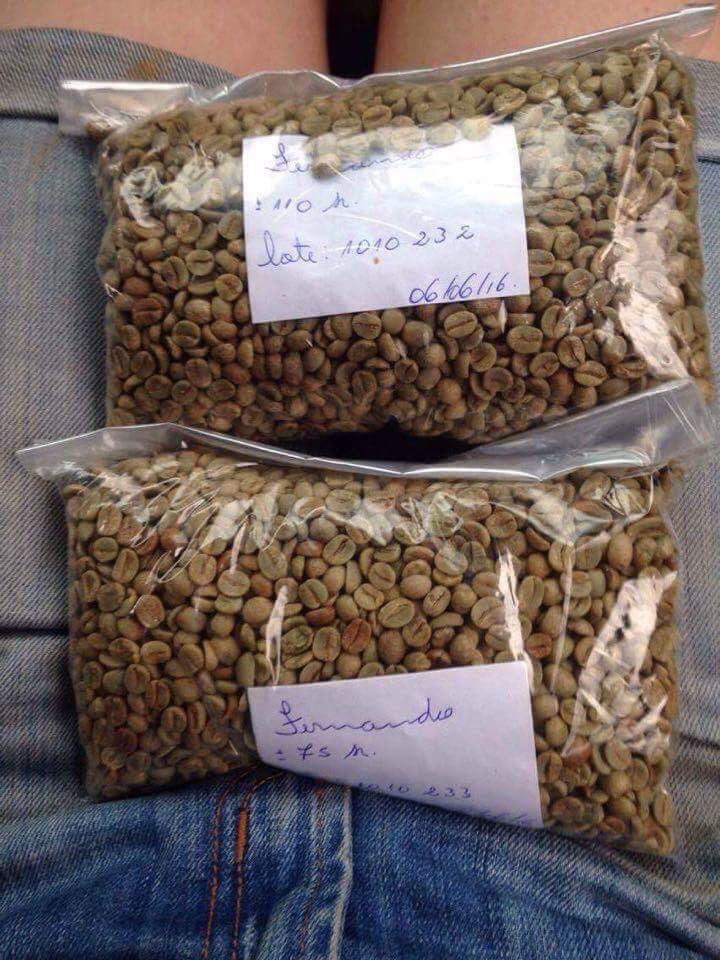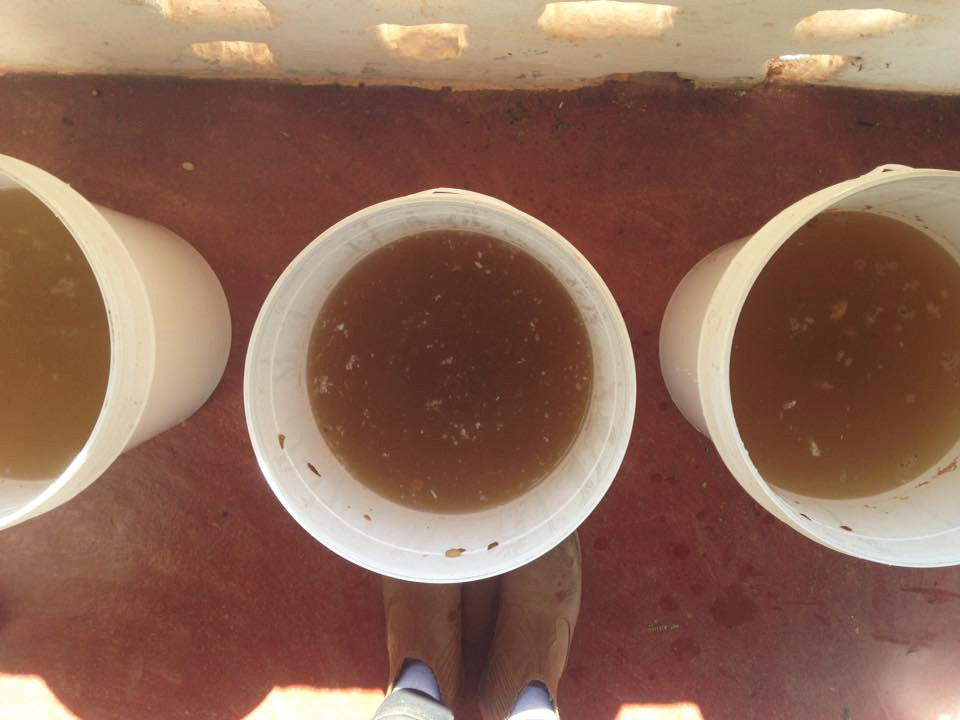Now that our Brazil roasting season is in full swing, we would like to share a bit more information on our coffees. As we discussed in our last post, Felipe Croce has been experimenting on alternative fermentation techniques over the past few years at Fazenda Ambiental Fortaleza.

Justin Miles, one of our former roasters, had been involved in some of the early experiments on the farm a few years ago and this year we sent Bara Ernygrova down to work with Felipe on some specific lot treatments for our coffee (a process that he is now applying to all of the washed process coffee from his mother farm).

In particular Felipe had noticed that due to a lower rainfall in April 2016 (the time of the season where coffee is getting close to ripe stage), his BRIX readings of the mucilage were low, which corresponded with a decrease in overall mucilage. BRIX is a simple tool for analyzing sugar content, in this case from the pulp fruit of the coffee cherry.
Knowing from his experience in the past years, Felipe drew some conclusions about what this lack of sugar would mean for the coffees (usually this would mean the coffee would cup with low body and acidity). Generally he had found that Anaerobic Fermentation, which is a wet fermentation in the absence of oxygen, created Lactic Acid, which has shown signs of resulting in a more “Creamy” and “Full Bodied/Silky” mouthfeel texture in the cup. This process is actually the same one that causes your muscles to get sore after strenuous use.
One of the keys in fermentation, why coffees can “go wrong” as Felipe puts it, is when this process is “pushed” too far. The problem as he sees it, is that the fermentation process uses up all of the available sugar molecules required for fermentation to continue. Over the past Summer, Felipe and Bara set to work on a series of batch tests to explore the range of controlling the process so that the fermentation could be pushed much further than they it could be previously.

The tests included a range of fermentation times, up to 30 days and 100 litres of sugar cane juice (something grown and readily available on the farm), along with probiotic yeasts and lab, and wine and champagne yeasts.

With our particular lot of Mondo Novo from the FAF farm, the coffee was fermented for 72 hours in water, with 2 litres of fresh sugar cane juice added to the fermentation. After the process, the coffee was washed with fresh water and dried on raised beds in the shade.
So in many regards, our lot is part of our exploration into ideas in development. Mainly from a producers side, Felipe has a hypotheses that the process can enhance a coffees body, sweetness, acidity and uniformity. As a roaster, we aim to have a more stable product than we have in the past with conventional processing with coffees from Brazil and we are tracking the cup characteristics and the behaviour of the coffee roasting process on this coffee to see if our results this year are noticeably different.
It is very much a work in progress and we imagine some years before we have definitive proof of what works. We are happy that Felipe has be able to recruit a Yeast and Enzyme specialist for this years harvest, who will visit for a week to do some controlled experiments. We are looking forward to the developments over this next year!


Leave a comment